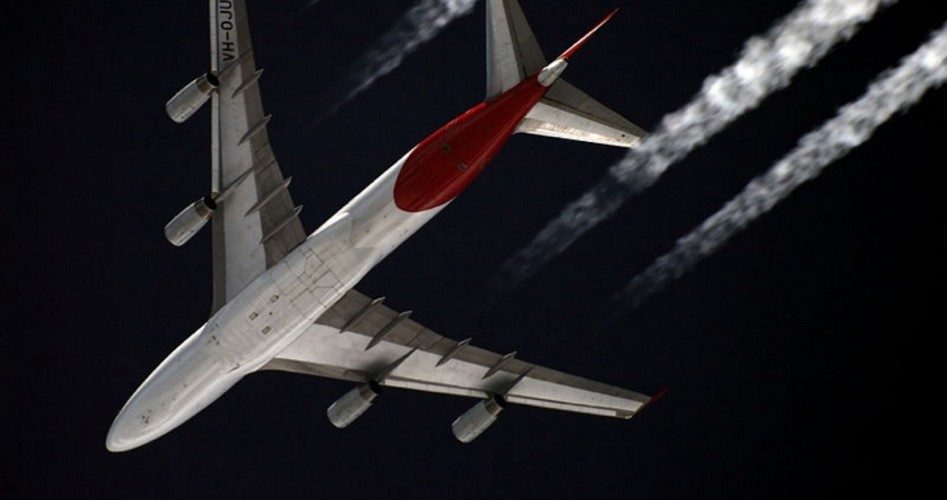
It didn’t take long for calls to privatize the FAA to surface following the agency’s announcement on Sunday that due to sequester cuts of $637 million (out of its $16 billion budget), all 47,000 of its employees, including 15,000 air traffic controllers, were being furloughed. The resulting delays were especially noticeable at high-traffic centers like New York City, Dallas-Fort Worth, and Los Angeles. FAA Administrator Michael Hurta said his agency “could find no other way” to respond to the mandated cuts but to inflict maximum pain on travelers dependent upon schedules and efficiency.
Peter Ferrara, writing at the American Spectator, said the cuts were deliberate, designed to score political points and pin the blame for the delays on recalcitrant Republicans:
If you are an air traveler this week, you might get a dose of how it feels to be deliberately abused by your government to score political points….
This week the Federal Aviation Administration (FAA) began imposing artificial, unnecessary delays on air travel, particularly out of high profile airports around New York, Washington, and Los Angeles. The FAA and the Obama Administration blame that on the sequester cuts, which they blame on the Republicans.
Chris Edwards, editor of the Cato Institute’s Downsizing Government project, said that the real problem is that the FAA is run like a bureaucracy instead of like a business. It has suffered for years from cost overruns, the inability to manage new software programs designed to smooth traffic flow, and lack of accountability.
For example, in 2004 the agency embarked on a massive upgrade called NextGen, with an estimated cost of $2 billion. It was supposed to be fully operational by the end of 2010, but delays pushed it back for a year. Then, in June 2011, the project was “rebaselined” and a new target date of 2014 was established for full implementation, along with an estimated cost overrun of $330 million. According to Aviation Week, that was too optimistic and further delays are likely, and the cost overruns will likely exceed $500 million.
When the Government Accounting Office (GAO) looked at it, it found that “costs for 11 of the 30 programs [involved with NextGen] have increased from their initial estimates by a total of $4.2 billion and 15 [of them have] experienced delays … rang[ing] from 2 months to more than 14 years.” The GAO went on to say that of the four programs it selected to analyze in depth, the FAA “is not consistently following the characteristics of high-quality cost estimates and scheduling best practices.”
Why should they? What incentive is there to follow “best practices” when the agency can always run to Congress for more money? As scholars Chris Edwards and Robert Poole of Cato explained:
As a government agency, the FAA is not designed to judge risks, aim at the most efficient investments, manage people to produce results, reward excellence, or punish incompetence.
The only answer to such extravagance and waste is to privatize the FAA, according to these researchers. A new company, FAA Incorporated, could be set up with no links to the federal government. This would allow it to operate under free market principles, creating agreements with airlines to provide air traffic control services on a fee-for-service basis. It would be answerable to private investors and other stakeholders and would have the incentive to provide service at a profit.
It’s been done before. In the past 20 years, 50 countries have turned over those functions to private companies. In Great Britain the private company running air traffic control is financed entirely by user fees and is owned by the airlines, airports, and its employees. In 1996, Canada privatized its air traffic control functions with the creation of Nav Canada, a private corporation that derives its revenues not from Canadian taxpayers but from the users of its services: the airlines and its customers. Nav Canada is fully disclosed and completely transparent in its financial records and in its safety plans. It now ranks in the top 10 percent for safety of all air navigation services in the world.
When Suffolk University Law School looked at those services, it concluded:
Service quality has improved in most cases. Several have successfully modernized workplace technologies. The safety records of [these services] are not adversely affected by commercialization, and in some cases safety is improved. Costs are generally reduced, sometimes significantly.
Calls for privatization in the current environment will likely fall on deaf ears. Instead, the political advantage of using agencies such as the FAA to put pressure on reluctant members of Congress to eliminate sequester cuts and let the government continue to spend without limit is too great. The mindset that the government can run everything will end when it runs out of money. Then, free market solutions to problems like these will likely generate much more traction.
A graduate of Cornell University and a former investment advisor, Bob is a regular contributor to The New American magazine and blogs frequently at www.LightFromTheRight.com, primarily on economics and politics. He can be reached at [email protected].



